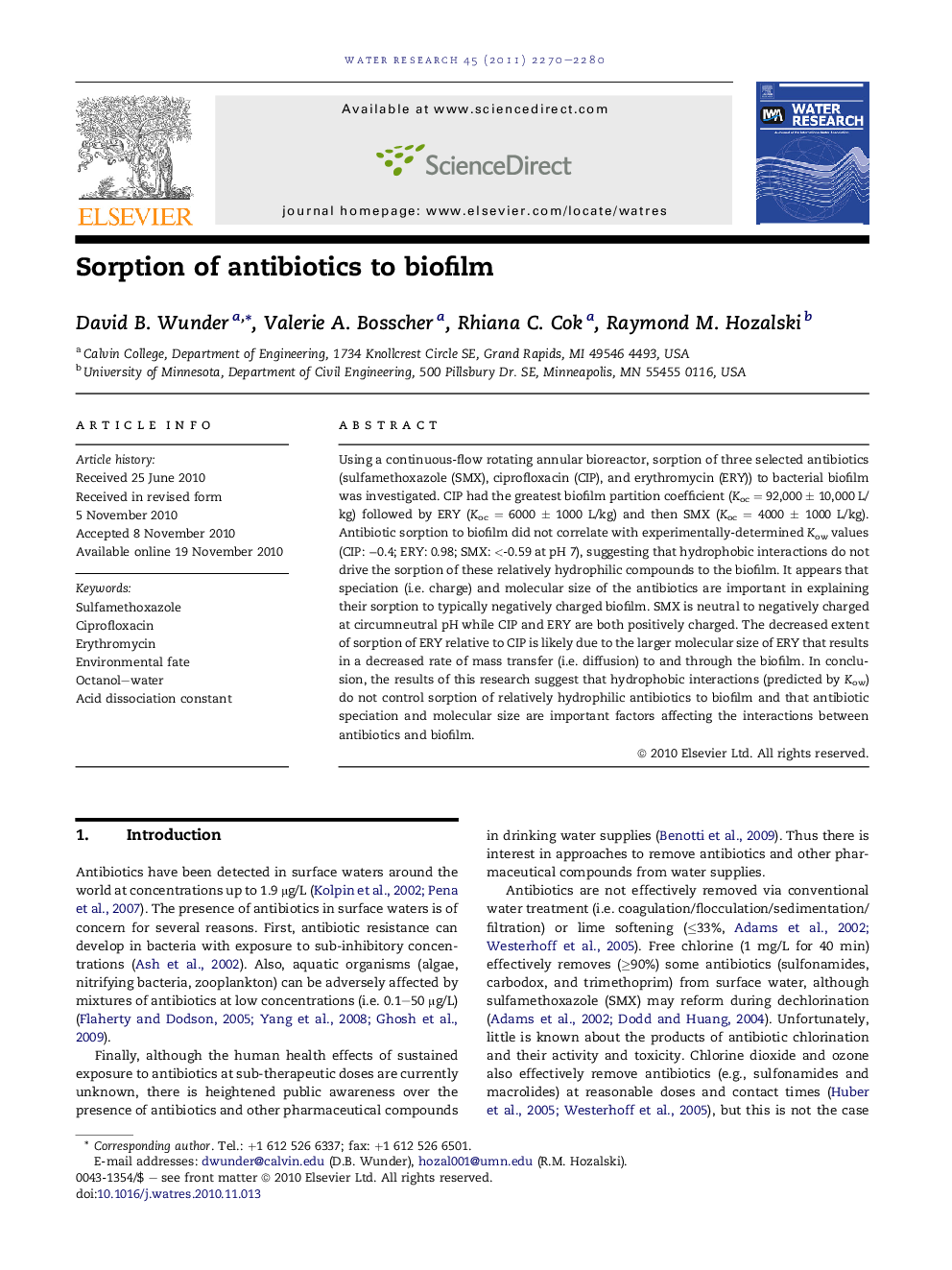| Article ID | Journal | Published Year | Pages | File Type |
|---|---|---|---|---|
| 4484321 | Water Research | 2011 | 11 Pages |
Using a continuous-flow rotating annular bioreactor, sorption of three selected antibiotics (sulfamethoxazole (SMX), ciprofloxacin (CIP), and erythromycin (ERY)) to bacterial biofilm was investigated. CIP had the greatest biofilm partition coefficient (Koc = 92,000 ± 10,000 L/kg) followed by ERY (Koc = 6000 ± 1000 L/kg) and then SMX (Koc = 4000 ± 1000 L/kg). Antibiotic sorption to biofilm did not correlate with experimentally-determined Kow values (CIP: −0.4; ERY: 0.98; SMX: <-0.59 at pH 7), suggesting that hydrophobic interactions do not drive the sorption of these relatively hydrophilic compounds to the biofilm. It appears that speciation (i.e. charge) and molecular size of the antibiotics are important in explaining their sorption to typically negatively charged biofilm. SMX is neutral to negatively charged at circumneutral pH while CIP and ERY are both positively charged. The decreased extent of sorption of ERY relative to CIP is likely due to the larger molecular size of ERY that results in a decreased rate of mass transfer (i.e. diffusion) to and through the biofilm. In conclusion, the results of this research suggest that hydrophobic interactions (predicted by Kow) do not control sorption of relatively hydrophilic antibiotics to biofilm and that antibiotic speciation and molecular size are important factors affecting the interactions between antibiotics and biofilm.
Research highlights► Antibiotic sorption to biofilm dependent on antibiotic structure and speciation. ► Koc values do not correlate with the antibiotic Kow values. ► Hydrophobic interactions not important for hydrophilic compound sorption to biofilm.
